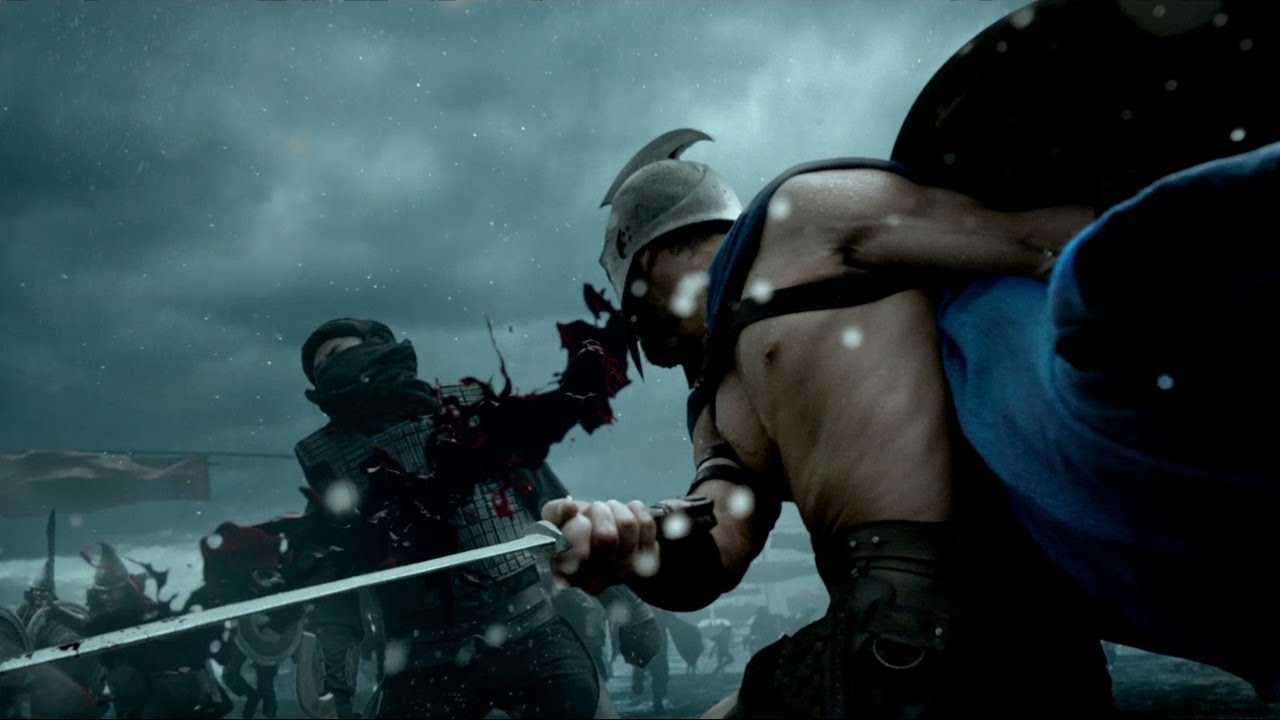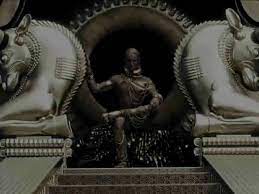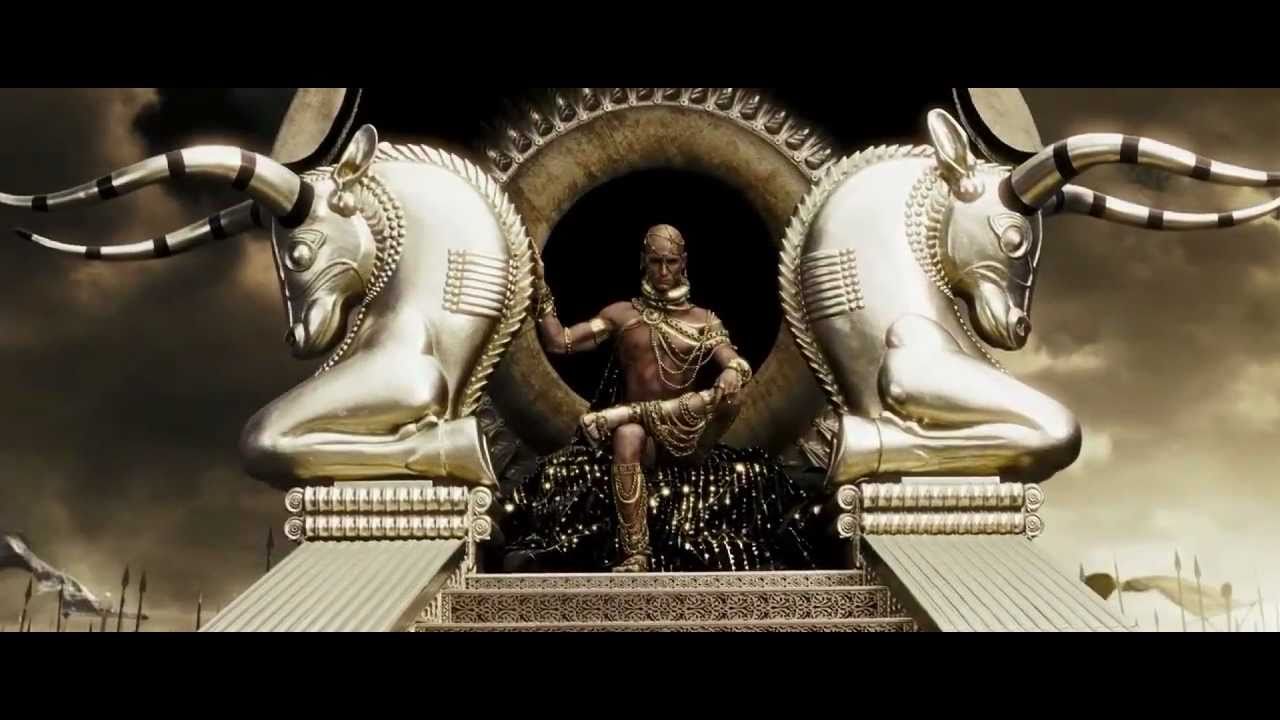🎬 300 (2007)

300 (2007) Review
Introduction
Directed by Zack Snyder, 300 (2007) is a visually striking adaptation of Frank Miller’s graphic novel, which reimagines the Battle of Thermopylae with a hyper-stylized aesthetic and epic storytelling. Starring Gerard Butler as King Leonidas, the film dramatizes the heroic stand of 300 Spartan warriors against the vast Persian army led by King Xerxes (Rodrigo Santoro). With its unique visual style and larger-than-life characters, 300 has become a cultural touchstone, though it has also garnered criticism for its historical liberties and stylized violence.
Plot Overview
Set in 480 BC, the film follows King Leonidas of Sparta, who defies the Spartan council to lead 300 of his finest warriors into battle against the Persian Empire. Facing overwhelming odds, the Spartans rely on their superior training, discipline, and tactical genius to hold off the massive Persian army at the narrow pass of Thermopylae.
As Leonidas and his men engage in a series of brutal and visually stunning battles, the film interweaves subplots involving Queen Gorgo (Lena Headey) as she fights to rally political support for Sparta at home. The story culminates in a tragic yet heroic finale that cements the Spartans’ legacy as symbols of courage and sacrifice.
Strengths
1. Groundbreaking Visual Style
Snyder’s use of green screen technology and meticulous visual effects creates a highly stylized, almost surreal aesthetic. The sepia-toned cinematography and slow-motion combat sequences capture the essence of Frank Miller’s graphic novel, making the film feel like a living comic book.
2. Gerard Butler’s Commanding Performance
As King Leonidas, Gerard Butler delivers a powerful and charismatic performance. His fiery speeches and imposing physical presence bring the legendary Spartan leader to life, anchoring the film with emotional intensity.
3. Epic Battle Sequences
The film’s action scenes are a masterclass in choreography and visual storytelling. From phalanx formations to one-on-one duels, the battles are both brutal and poetic, showcasing the Spartans’ martial prowess.
4. Memorable Dialogue
The film is filled with iconic lines, including Leonidas’s rallying cry, “This is Sparta!” and his defiant response to Persian demands to lay down their weapons: “Come and take them.” These moments add to the film’s larger-than-life quality.
5. Immersive Score
Tyler Bates’s pulsating score blends orchestral and rock elements, heightening the film’s intensity and complementing its larger-than-life tone.
Weaknesses
1. Simplistic Narrative
While the film’s straightforward story emphasizes heroism and sacrifice, it lacks narrative complexity. The characters are archetypal, and the plot primarily serves as a backdrop for the action sequences.
2. Historical Liberties
300 takes significant creative liberties with historical events, simplifying and exaggerating the Battle of Thermopylae. While the film is not intended to be historically accurate, its portrayal of Persians as grotesque caricatures has drawn criticism for perpetuating stereotypes.
3. Repetitive Structure
The relentless focus on combat can feel repetitive, as the film moves from one battle sequence to another with minimal variation. This may diminish its emotional impact for some viewers.
4. Lack of Character Development
Apart from Leonidas and Queen Gorgo, the characters are thinly sketched. The supporting Spartans, while visually distinctive, lack depth, making it difficult to emotionally invest in their fates.
Themes and Symbolism
1. Heroism and Sacrifice
The film glorifies the Spartans’ willingness to fight and die for their ideals, portraying their stand as the ultimate act of courage and duty.
2. Freedom vs. Oppression
300 frames the conflict as a battle between freedom-loving Spartans and the tyrannical Persian Empire, emphasizing themes of autonomy and resistance against subjugation.
3. Legacy and Immortality
Through their sacrifice, the Spartans achieve a form of immortality, inspiring future generations and ensuring their deeds are remembered.
Visual and Technical Aspects
1. Cinematography
Larry Fong’s cinematography captures the film’s distinct visual style, with dramatic contrasts and slow-motion sequences that emphasize the Spartans’ heroics.
2. Production Design
The film’s sets and costumes combine historical elements with exaggerated designs to create a mythic atmosphere. The Persian army’s fantastical look adds to the film’s surreal quality.
3. Editing
The precise editing enhances the flow of the action scenes, maintaining a balance between chaos and clarity. The use of slow motion accentuates key moments, giving the battles a cinematic grandeur.
Final Verdict
300 (2007) is a visually stunning and unabashedly stylized action epic that delivers thrilling battle sequences and memorable performances. While its simplistic narrative and historical liberties may polarize audiences, the film’s aesthetic innovation and iconic moments have solidified its place as a modern classic. For fans of action and spectacle, 300 offers an unforgettable cinematic experience.
Rating: 8/10